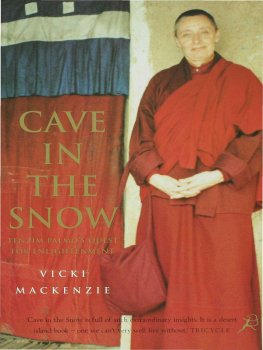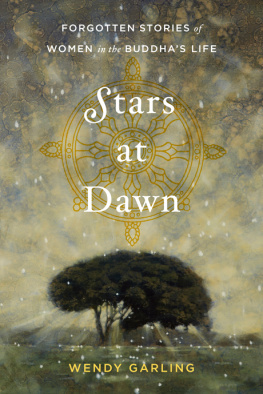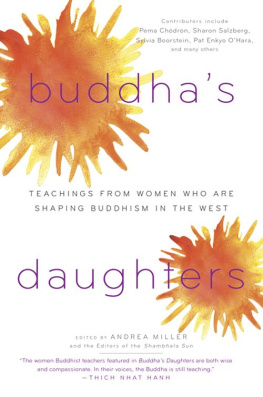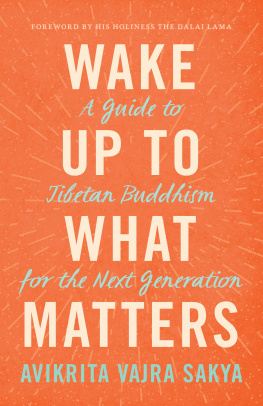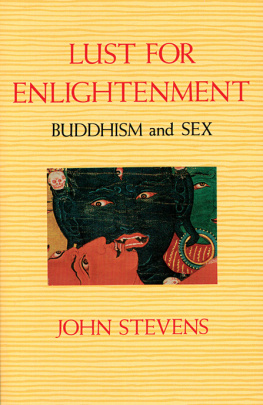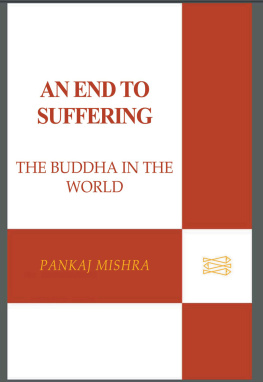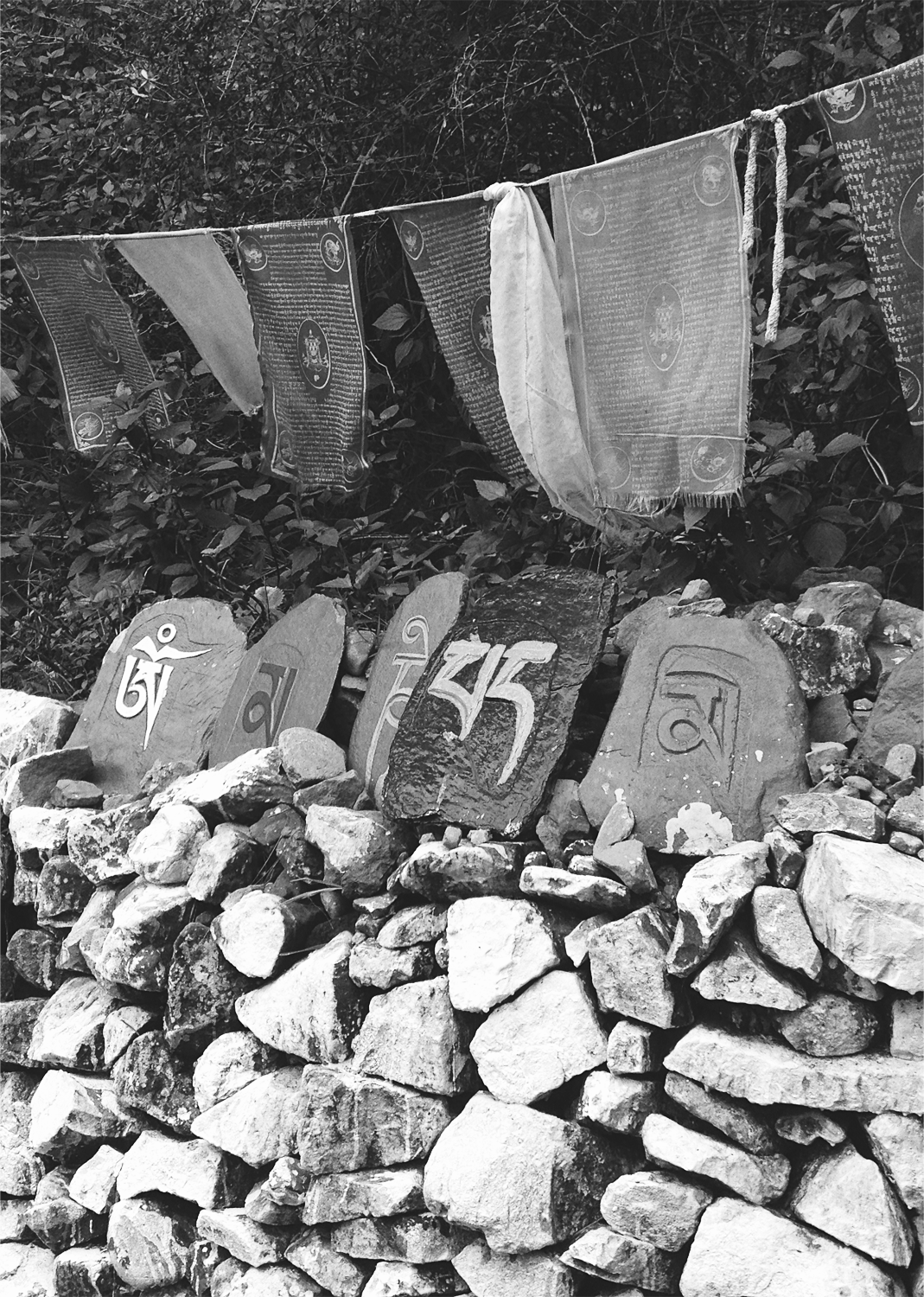
Preface
CROSSROADS
MY INTERPRETER TSERING STRIDES AHEAD, sure-footed and mindful that, if we are late, the woman we are to meet might take fright and flee. As we hurry along this rocky path behind the Dalai Lamas private compound, edging past mothers holding the hands of small children, maroon-robed monks and elderly devotees, some smile and wave, looking puzzled at our haste. This narrow path that circles the Tsuglagkhang Temple in the Himalayan foothills of Dharamshala, northern India, is meant to be trodden slowly, as a form of Buddhist meditative practice. To walk its length clockwise is to perform a kora, a pilgrimage intended to calm the mind.
While pilgrims tread the path, many slip strings of mala beads between their fingers, lips fluttering with the silent chant of chosen mantras. At one point, where the path widens, a row of giant brass prayer wheels gently rolls to the touch of those who pass. Inside the drums are sheaves of prayers, said to gain force from movement. Dotted among the pine trees flanking the hill ahead are brightly painted mani stones, some carved with prayers that Tenzin Gyatso, the Fourteenth Dalai Lama, will one day return to Tibet, where he once ruled supreme before Chinese troops invaded his strategically critical homeland, forcing him into exile more than fifty years ago.
As we reach our meeting place, there is no sign of Nyima and I fear that we have missed our chance. But then we glimpse her, head bowed, half hidden from view by a white stupa reliquary. She doesnt have long to talk. That night she must work in the kitchen of a small restaurant in the valley below. A cool wind blows up as Nyima starts to speak, carrying her words away and forcing us to lean close. Now and then, she turns to look over her shoulder, as if to make sure no one else is listening, though the place is all but deserted.
Even as a young girl Nyima had felt a calling to become a nun, she tells us. She was barely fourteen when, with the support of her family, she presented herself at the doors of a local nunnery close to the ancient Tibetan capital of Lhasa to be accepted as a novice. In years gone by, most Tibetan families would send their youngest son to become a monk, sometimes at the age of just three or four, to bring the family honor and often because they could not afford to feed large numbers of children. But with girls, it has traditionally been more a matter of the girls own choice. When a girl expressed a wish to join a nunnery, most families would look on it as the childs karma, even if it meant they would see little of their daughter from then on.
For two years, Nyima immersed herself in monastic life with deep contentment. But then her young world collapsed. When she was just sixteen, she and a small group of fellow novices dared to make a stand on a street corner in Lhasa to protest against the Chinese authorities recent decision to deny future generations of girls the right to enter Buddhist monastic orders under the age of eighteen. The protest lasted only a few minutes before the group was arrested and imprisoned in Lhasas notorious Drapchi jail.
Nyima spent the next five years in prison. She tells us how, in summer, she was forced to stand all day outside on a box with sheets of newspaper stuck under her armpits and between her legs. If the newspapers slipped, she was savagely beaten. In winter, she was made to stand barefoot on blocks of ice until the skin of her soles peeled away. Once, when she replaced the words of a song inmates were instructed to sing in praise of Chairman Mao with her own version paying tribute to the Dalai Lama, she was locked for two years in solitary confinement and tortured with electric cattle prods.
Broken physically and mentally by her ordeal, by the time she was released Nyima had abandoned her dream of living as a nun. Her only goal was to escape what the Chinese euphemistically call the Tibet Autonomous Region, which covers only half of the land that Tibetans claim as their ancient territory. After fleeing across the Himalayas to Nepal, she made her way into exile in India. Regret for her lost vocation is written in Nyimas soft features as she speaks.
This brief meeting is my first encounter with a Buddhist nun, albeit one forcibly disrobed, and it haunts me long after we have parted.
A few days after speaking with Nyima, I visit a nunnery near Dharamshala where I encounter hundreds more young nuns, some barely into their teens, some having also escaped Tibet. One pretty young nun with a shaven head named Dawa Dolma trekked across the Himalayas for two months without her family when she was just eleven years old. Inspired by the deep Buddhist faith of her grandmother, she too had decided at a very young age she wanted to become a nun and sought novice ordination as soon as she reached India. When I ask her how she feels now about her chosen path, her features light up. It makes me feel as if Im standing on a tall mountain, she says. It makes me feel as if I can see a long way.
There is something that impels me to want to understand more about what led women such as Nyima and Dawa Dolma to enter holy orders in the first place, especially at such a young age. But on this, my first visit to Dharamshala, there is little time. It is early May 2011, and I am here to record a seismic shift in the lives of exiled Tibetans. For more than three centuries, successive Dalai Lamas have fulfilled the dual role of supreme spiritual guide and political figurehead for their people, but two months earlier, Tenzin Gyatso, the Fourteenth Dalai Lama, announced his intention to retire from such temporal duties. That summer an energetic Harvard-educated lawyer, Lobsang Sangay, would be stepping into the Dalai Lamas earthly shoes as elected prime minister of the Tibetan government-in-exile. As I sat beside Dr. Sangay in a small plane hugging the snow-capped peaks of the Himalayas as we fly north, we talk about this historic transfer of power and how, despite being the child of Tibetan refugees who had witnessed atrocities in their homeland, he was determined to stick to pacifist principles in tackling the leadership challenge he was about to face.
Later, in the sunlit antechamber of the Dalai Lamas private residence, I talk to his nephew about the sensitive issue of the spiritual succession. In the past, Tenzin Gyatso has spoken of the role dying with him if his people feel they no longer need such a spiritual leader. If they do want a successor, and he dies in exile, Tenzin Gyatso has made it clear that the one who takes his place will also come from outside Tibet. On more than one occasion, he has also raised the possibility that his successor could be a woman, noting his belief that women have a greater capacity for compassion.
If a female Dalai Lama comes, then that female must be very beautiful, he has told devotees, before adding, with the mischievous chuckle that sometimes belies his gravitas as recipient of the Nobel Prize for Peace, If the female Dalai Lama is very ugly, then fewer people will show interest.
This comment about prerequisite beauty has caused offense to some feminists, but the moment of what the Dalai Lama says has not been lost. Imagine if the Pope were to announce he expected a woman to rule the Holy See one day, or if the Grand Ayatollahs of Iran decreed their successors could soon be wearing chadorsthere would be gasps worldwide. Yet, among the worlds community of more than half a billion Buddhists, the possibility that one of their most revered spiritual leaders could one day be female appears to be acknowledged with little dissent.
Such an enlightened stance also has me intrigued. And so I vow one day to return to this Himalayan hill station to explore the lives of Tibetan Buddhist nuns and the strides they are making toward equality with their monastic brethren. But no sooner has this seed of an idea taken root than it starts to grow into something far bigger. The more I explore the unfamiliar world of Buddhist nuns, the more extraordinary it becomes. First, I hear of nuns in Nepal practicing kung fu in search of physical and spiritual empowerment. Then I learn of one British woman who, finding herself the only nun in a monastery of 100 monks, took herself to a remote cave in the Himalayas for twelve years, surviving avalanches, wolves, and temperatures of 35C, in search of silence, solitude, and enlightenment. I unearth news of a nun in Burma being imprisoned for impersonating a monk because she dared challenge the countrys authoritarian regime. Further afield, I discover a Zen Buddhist nun in Japan, regarded by many as a national treasure, who has won many of countrys most prestigious literary prizes, several of them for erotic fiction.
Next page


